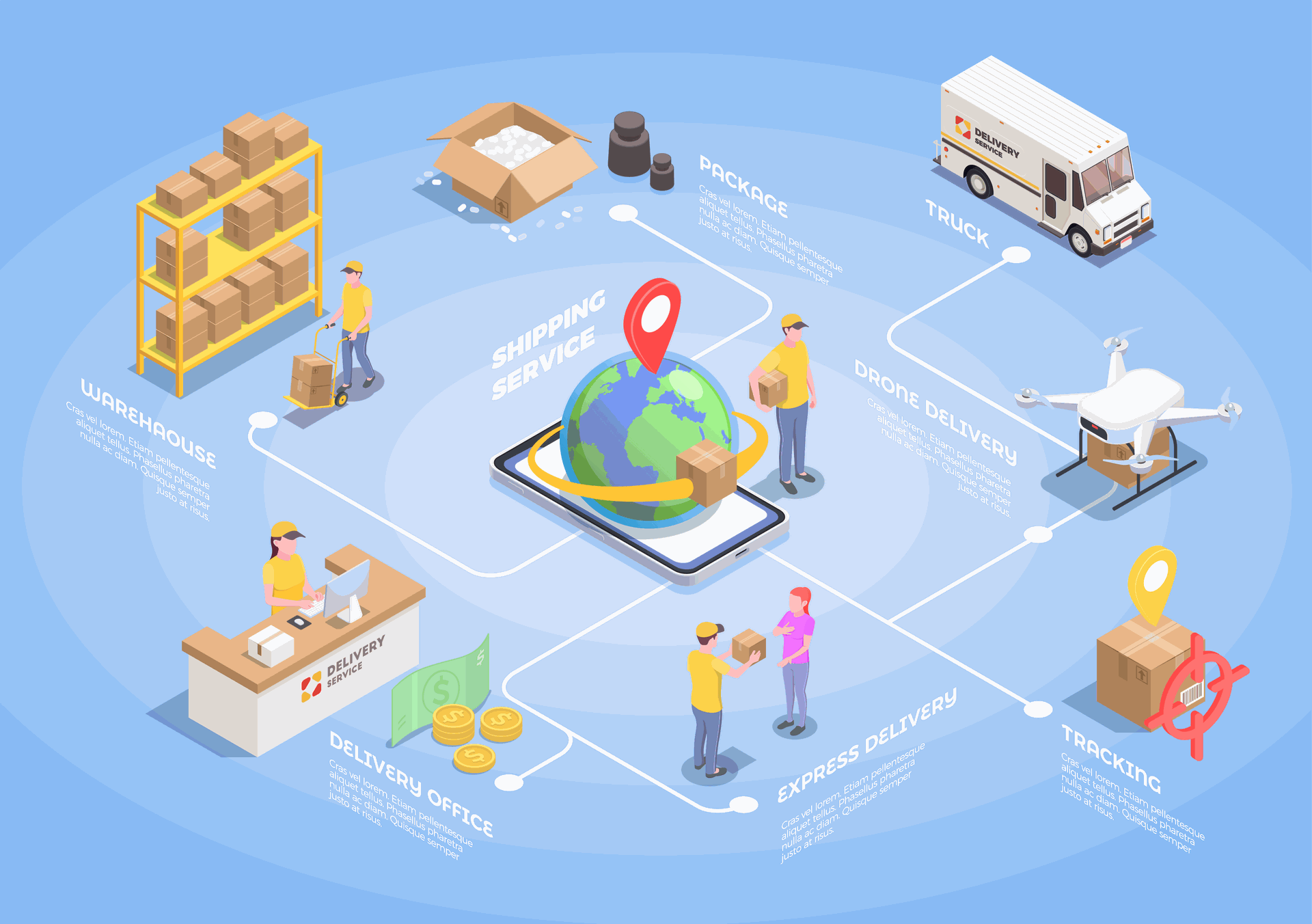In the logistics sector, thousands of orders are processed daily, and hundreds of sets of documents are printed and circulated between departments. Bills of lading, bookings, invoices, warehouse receipts/issue slips—all these create a massive volume of paperwork. This not only makes the operational workflow cumbersome but also consumes significant time, manpower, and company resources.
As the costs of printing, storage, and errors from manual processes continue to climb, the question arises: how can a business simultaneously optimize efficiency and move closer to the goal of “green logistics”? The answer lies
1. Digital transformation: The foundation of green logistics

In the journey toward "green logistics," digital transformation plays a crucial starting role, helping businesses both enhance operational efficiency and minimize environmental impact.
The reduction of paperwork is more than just saving office supply costs; it is the first step to minimizing the carbon footprint across the entire supply chain. With Sota FMS, all documents are managed, shared, and stored completely on a digital platform. Instead of printing hundreds of hard-copy documents for each shipment, businesses can send, receive, sign, retrieve, and archive them online. This not only helps reduce paper usage by up to 70% annually but also limits physical transportation, printing, and storage activities—factors that contribute to CO₂ emissions.
Sota FMS helps logistics businesses move closer to a "paperless operation" model on an ERP platform, aligning with the goals of green and sustainable logistics. More importantly, the deployment of the FMS system and digital solutions also helps businesses meet ESG criteria and work toward Sustainable Development Goals (SDGs), such as: SDG 9 (Industry, Innovation, and Infrastructure: encouraging the application of technology in operations) and SDG 12 (Responsible Consumption and Production: reducing resource waste and optimizing processes).
Furthermore, electronic data helps limit the need for physical movement, as departments can access and share documents with just a few online clicks. This saves time and energy while significantly reducing the fuel consumption associated with internal transportation activities.
2. Increased efficiency and reduced errors through automation and AI echnology

Digitalization is truly meaningful when combined with automation. A modern FMS system integrates AI OCR, AI Assistant, and Workflow Automation to process data quickly and accurately.
- AI OCR (Optical Character Recognition): Automatically recognizes and extracts information from documents such as bookings, invoices, or bills of lading, eliminating manual data entry errors.
- AI Assistant: Supports users in tracking progress, reminding them of order processing deadlines, or automatically generating real-time reports.
- AI Chatbot: Provides 24/7 customer support across multiple platforms such as Zalo, WhatsApp, and website live chat. This helps businesses manage customers easily, increase sales opportunities, and maintain upselling.
- Automated Workflow: Synchronizes data between departments (sales, accounting, warehousing), allowing everyone to work on the same platform, reducing overlaps and errors.
The CRM system specialized for the Logistics industry creates a unified ecosystem among accounting, warehousing, and customer care. The seamless linkage of these departments creates a unified operational ecosystem. Thanks to this integration, businesses not only improve internal operational efficiency but also create a seamless customer experience.
Another key benefit of FMS is its smart data analysis capability. Through real-time reporting dashboards, managers can monitor operational performance, order status, logistics costs, and the responsiveness of each department.
In summary, businesses can save up to 60% of manual operation time and enhance accuracy in order processing, thereby increasing productivity without the need to increase personnel.
3. Green logistics, starting with small hanges

Digital transformation in logistics is not a "quick revolution," but a journey of changes that begin with small and incremental improvements, with the long-term goal being a complete system overhaul. Every action, such as reducing paper printing, digitizing documents, or automating operational reports, is a building block contributing to the foundation of "green logistics."
This step-by-step digitization not only helps businesses save costs, shorten processing time, and minimize errors, but also creates long-term sustainable value. When data is managed transparently and automatically, businesses can make faster decisions, reduce resource waste, and optimize the efficiency of the entire supply chain.
More importantly, these small improvements are helping the logistics industry contribute to realizing Vietnam's "Net Zero 2050" goal by reducing carbon emissions, saving energy, and protecting the environment. This is not just a social responsibility, but also a strategy to enhance brand reputation in the eyes of international partners and customers who increasingly value businesses operating with a green and sustainable orientation.
4. Conclusion
In an era where "efficiency and sustainability" are two intertwined and prioritized factors for businesses, digitizing logistics processes is no longer an option, but an essential step. Sota Solutions' Sota FMS system is not just comprehensive management software on a single platform; it is the key to unlocking the green transformation journey for Vietnamese logistics businesses. Reducing paperwork, increasing efficiency, and lowering emissions are some of our core goals on the path to digitization and collaboratively building a greener, smarter, and more sustainable logistics ecosystem for the future. This is also one of the indirect impacts of applying Industry 4.0 technology on the journey towards sustainable digitization. Contact us to get the latest technology updates.